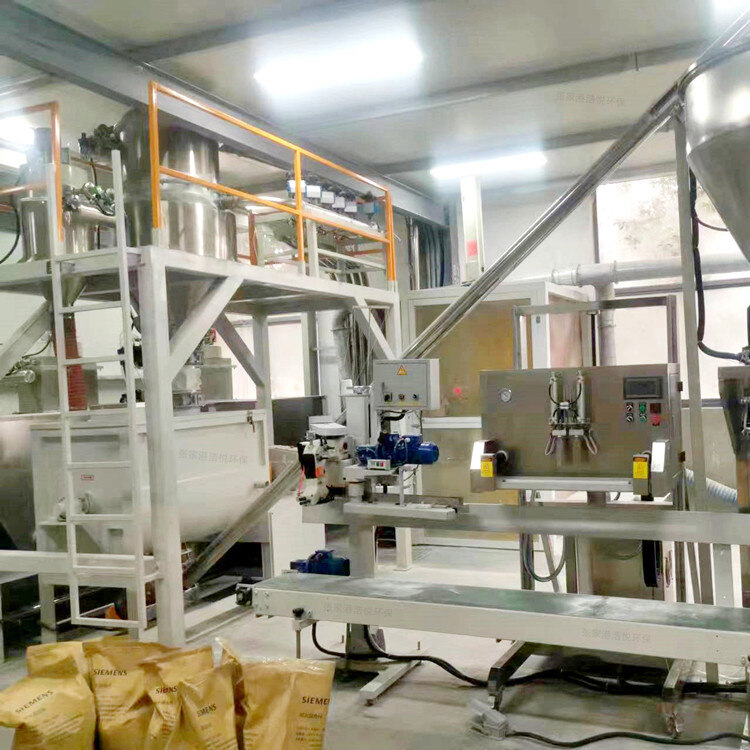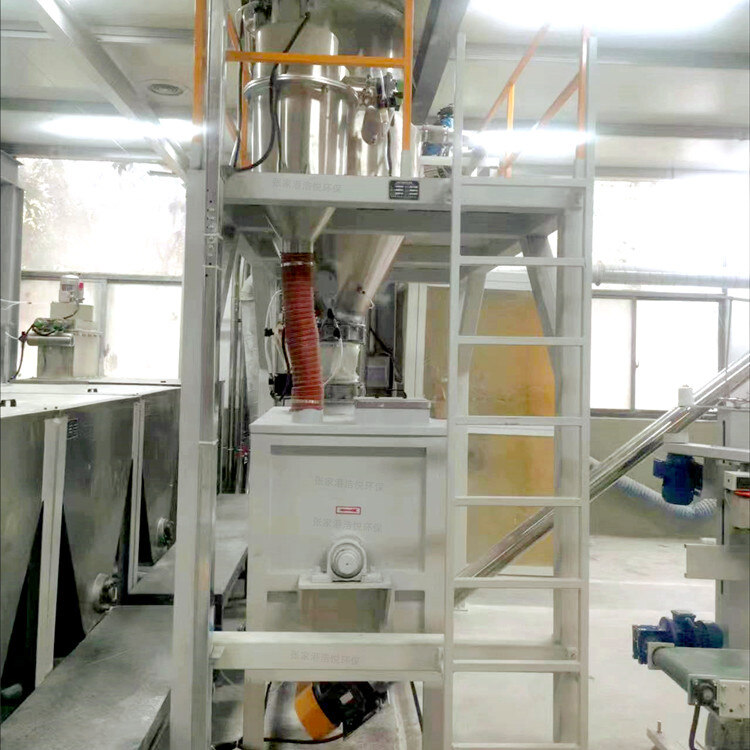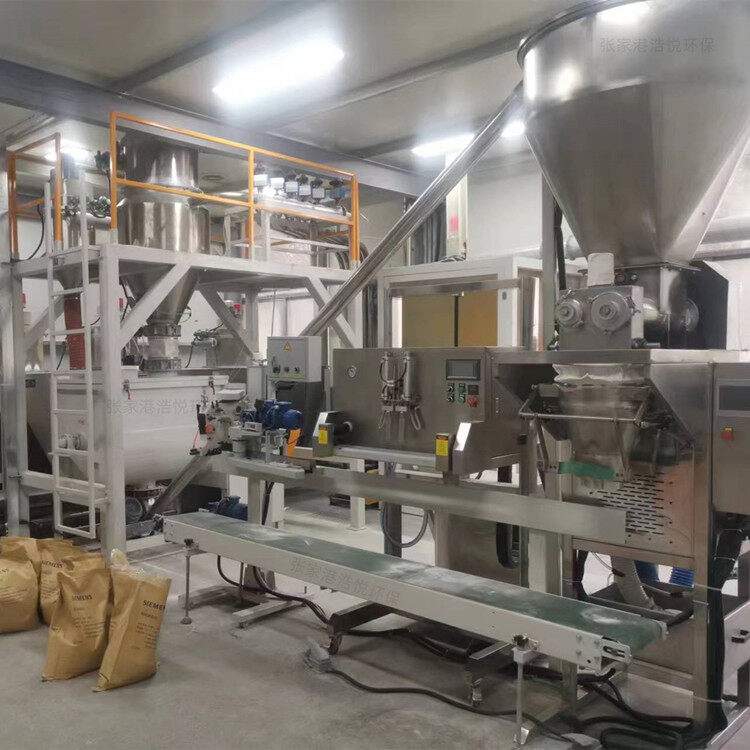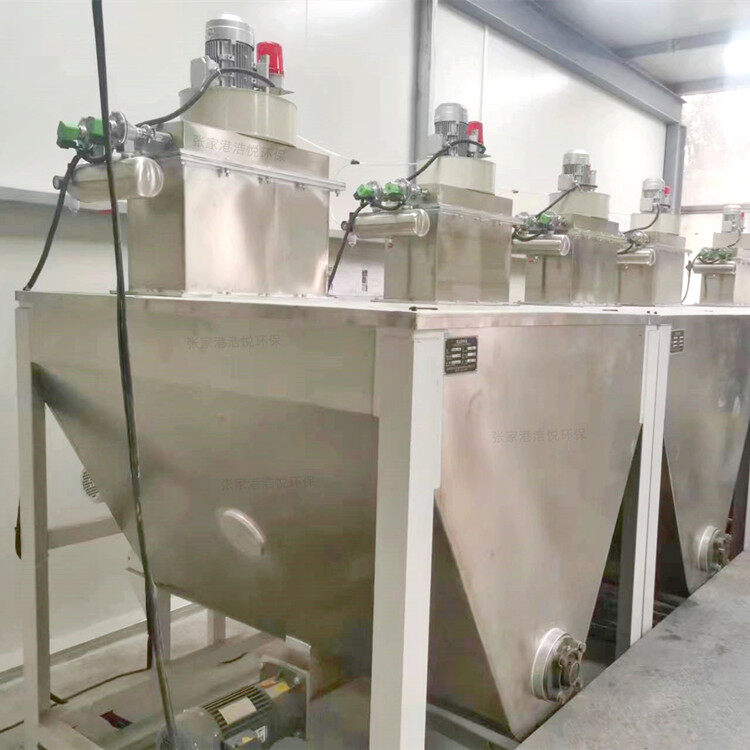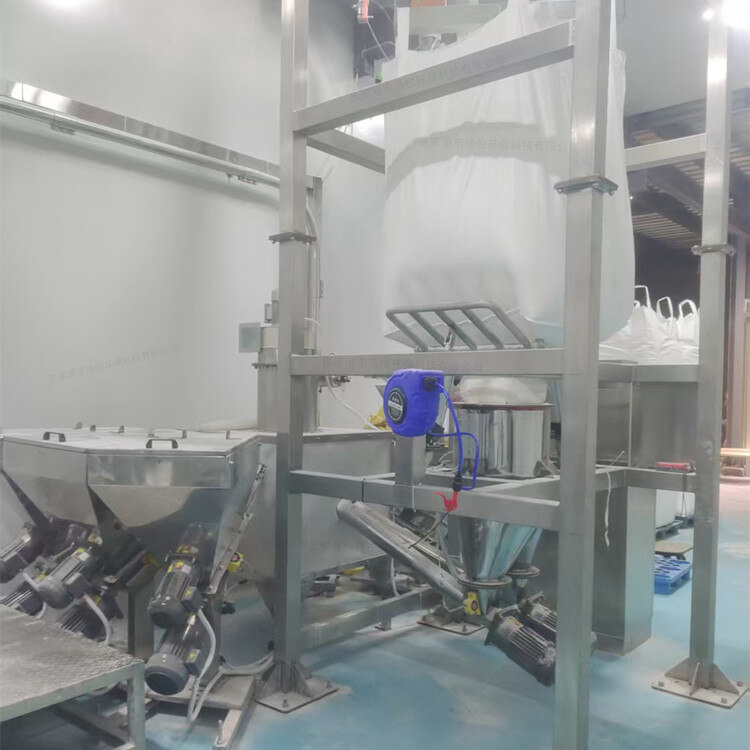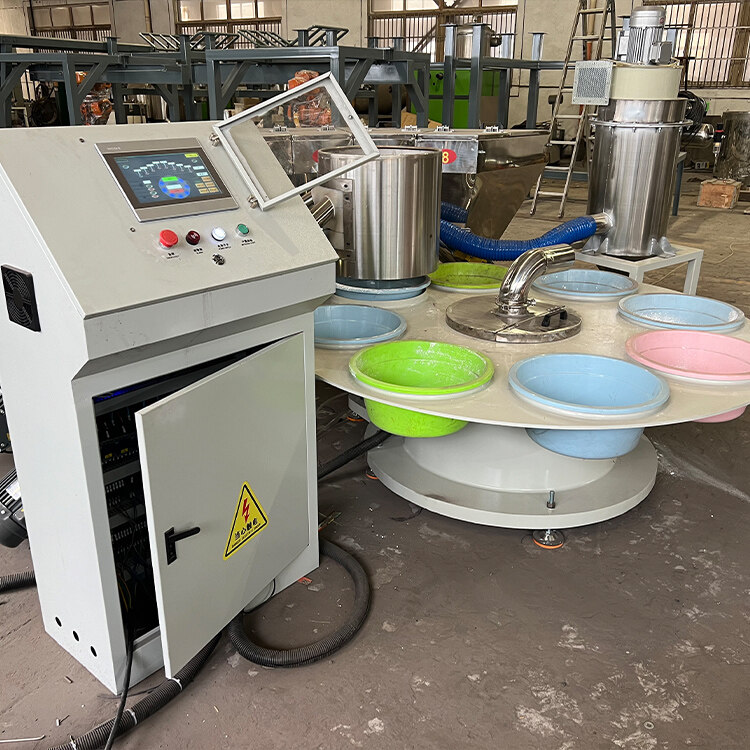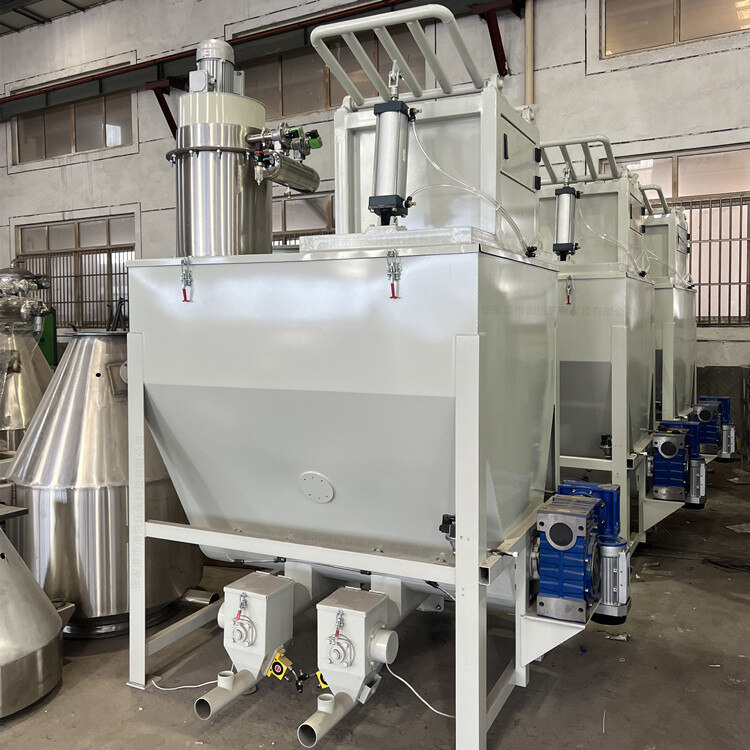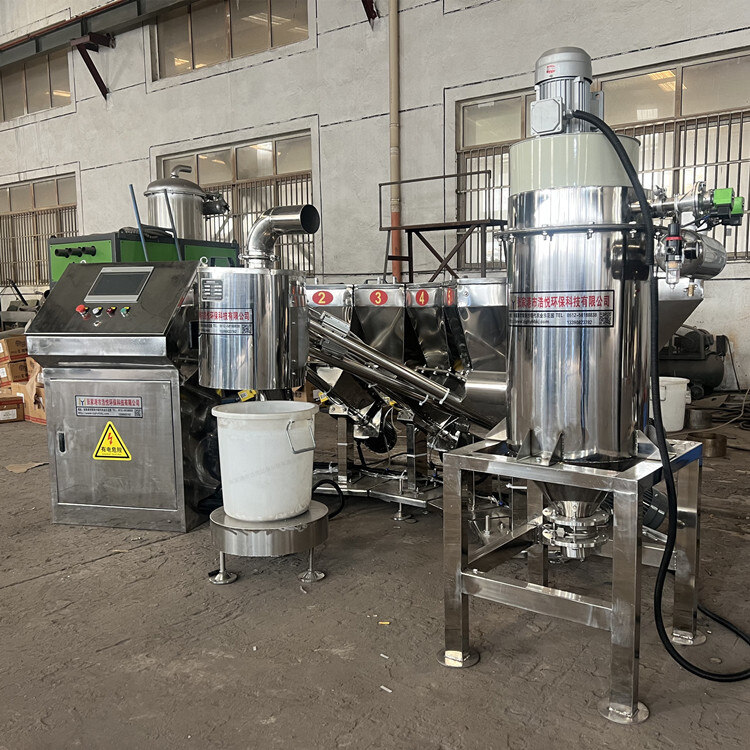- Introduction to automatic batching machine and fully automatic batching machine equipment
- The powder metering system tells you about the introduction of the mixing and drying machine
- 1000kg vacuum feeding machine
- Fully automatic small material batching system
- Research on Innovation of Automatic Weighing Machine Technology
- Design and operation of automatic batching system using PLC, industrial computer and frequency converter
Dust free feeding station, metering and mixing, feeding and feeding, automatic weighing and packaging
- Category:Automatic measuring packaging machine
- Hits:196次
- Release Date:2025-06-30
- Share:
- Inquiry
- Details
In the process of modern industrial production moving towards intelligence and refinement, dust-free feeding stations, metering and mixing, feeding and automatic weighing and packaging systems have become key links in achieving efficient production and quality control in industries such as food, pharmaceuticals, and chemicals. These systems have built a complete closed loop from material delivery to finished product packaging by integrating automation technology, precise measurement, and dust-free design. The following will provide a detailed introduction to the technical principles, core functions, application scenarios, and collaborative value of each system.
1、 Dust free feeding station: the first barrier of clean production
The dust-free feeding station is a closed feeding equipment designed for dust prone materials such as powders and particles. Through negative pressure dust removal and sealing design, the dust pollution during the feeding process is controlled to the lowest level, meeting strict hygiene standards such as GMP and HACCP.
(1) Core Structure and Technical Characteristics
Closed feeding unit
Made of 316L stainless steel or food grade engineering plastic material, the feeding port is equipped with a pneumatic sealing door and a guide groove to prevent dust from overflowing. Some high-end models integrate robotic arm assisted feeding to reduce manual contact, such as the isolated feeding station used in the pharmaceutical industry, which achieves zero contact feeding through glove box design.
Efficient dust removal system
Equipped with pulse bag filter or filter cartridge dust collector, negative pressure (-500Pa to -1000Pa) is generated by the fan, and the dust generated during feeding is sucked into the filtering device in real time. For example, the dust-free feeding station used by a certain food factory has a dust removal efficiency of 99.9% and an emission concentration of less than 1mg/m ³, which meets environmental protection requirements.
intelligence control system
By using PLC to control the start and stop of the dust removal fan, the opening and closing of the sealing door, and fault alarms, some models integrate RFID material recognition function to automatically match material information and prevent feeding errors.
(2) Application scenarios
Pharmaceutical industry: Used for dust-free feeding of APIs (active pharmaceutical ingredients) and excipients to avoid cross contamination, such as sterile feeding stations in vaccine production that require online dust particle monitoring.
Food additive production: realize dust-free feeding of sugar powder, essence and other materials to ensure product hygiene. After a baking enterprise introduced a dust-free feeding station, the rate of microorganism exceeding the standard dropped by 80%.
Lithium battery materials: For flammable dust materials such as positive electrode materials (such as lithium iron phosphate), explosion-proof dust-free feeding stations are used, equipped with anti-static grounding design.
2、 Measurement mixing system: the core of precise proportioning and uniform dispersion
The metering and mixing system ensures the consistency of finished product ingredients through precise metering and efficient mixing of multi-component materials, which is a key link in formula production.
(1) Analysis of Measurement and Hybrid Technology
Multi material measurement scheme
Weight measurement: Using high-precision weighing sensors (accuracy ± 0.1%) and weight loss scales, suitable for measuring main materials such as resin in plastic granulation.
Volume measurement: volume is controlled by screw, plunger and other parts, suitable for auxiliary materials with good fluidity, such as essence added in food processing.
Flow measurement: Coriolis flowmeter directly measures mass flow and is used in continuous production scenarios, such as solvent addition in coating formulation.
Efficient mixing equipment
Double screw belt mixer: By reversing the rotation of the inner and outer screw belts, convective mixing is formed, suitable for mixing powder and particles, with a mixing uniformity of over 99%.
Planetary mixer: The mixing blade and revolving arm move in coordination, which has a significant mixing effect on high viscosity materials (such as cream cosmetics).
Static mixer: No moving parts, uses internal structure to separate and recombine materials, suitable for rapid mixing of liquids, such as beverage preparation.
(2) Technical advantages
Formula flexibility: Supports storage and quick switching of hundreds of formulas, ensuring core process security through permission management.
Process traceability: Automatically record the measurement data of each batch of materials, such as time, weight, and deviation values, to meet the data traceability requirements of FDA and GMP.
Energy consumption optimization: The variable frequency drive mixing motor automatically adjusts the speed according to the characteristics of the material, saving 30% energy compared to traditional equipment.
3、 Loading and feeding system: the power hub for production continuity
The feeding system is responsible for transporting materials from the storage end to the processing equipment, improving production efficiency and reducing manual intervention through automated conveying technology.
(1) Diversified conveying solutions
pneumatic conveying system
Negative pressure conveying: Negative pressure is generated by a vacuum pump, suitable for fine powders (such as flour), with a conveying distance of up to 100 meters and a sealed pipeline without leakage.
Positive pressure conveying: Compressed air pushes materials, suitable for large particles (such as nuts), with fast conveying speed and the ability to simultaneously achieve material cooling.
Mechanical conveying system
Spiral conveyor: It pushes materials through the rotation of the screw, suitable for materials with poor fluidity (such as clay), and can be conveyed obliquely or vertically.
Pipe chain conveyor: The chain piece belt moves animal materials in the pipeline with a small turning radius, suitable for compact layout in workshops, such as multi story conveying in pharmaceutical factories.
Intelligent feeding control
Integrated material level sensor and frequency converter controller, automatically starts feeding when the equipment hopper is below the lower limit value, and stops when it reaches the upper limit value, achieving unmanned operation of "on-demand supply".
(2) Typical applications
Grain and oil processing: Soybeans are transported to the crusher through a bucket elevator with a flow rate of 50 tons/hour to ensure continuous production.
3D printing materials: Metal powder is transported to the forming equipment through a vacuum feeder to avoid oxidation and ensure printing accuracy.
Feed production: Raw materials such as corn and soybean meal are fed proportionally through belt conveyors and linked with mixers to increase production capacity by 20%.
4、 Automatic weighing and packaging system: the last line of defense for finished product quality
The automatic weighing and packaging system achieves precise weight control and standardized packaging of products through high-precision weighing and automated packaging, which is the key to enhancing market competitiveness.
(1) Integration of weighing and packaging technology
Dynamic weighing technology
Belt type weighing: The material is weighed in real-time by a weighing sensor on the conveyor belt, suitable for granular materials, with a speed of up to 100 bags/minute.
Multi head scale weighing: Multiple weighing buckets work simultaneously to combine the target weight, suitable for irregular materials (such as candy), with an accuracy of ± 2g.
Weight inspection and sorting: high-speed online weighing to remove products with unqualified weight, such as the automatic weight inspection machine in instant noodle production lines.
Intelligent packaging unit
Bag packaging: available in various forms such as three sided sealing, four sided sealing, and self-supporting bags, equipped with heat sealing temperature adaptive control to prevent packaging leakage.
Can packaging: vacuum nitrogen filled packaging, extending the shelf life of food, such as inert gas replacement in milk powder cans.
Barrel packaging: automatic bagging, weighing, and sealing integration for large-sized materials (such as 25kg bagged cement).
(2) Digital Packaging Management
Visual inspection: After packaging, the sealing quality and label position are detected by a CCD camera, and non-conforming products are removed with an accuracy rate of 99.5%.
Data integration: linked with ERP system, automatically generate production batch reports, record packaging quantity, weight deviation, and equipment OEE (overall equipment efficiency).
Flexible changeover: By adjusting the packaging size through a servo motor, different specifications of products can be switched within 10 minutes to adapt to small batch and multi variety production.
5、 The value and development trend of system collaboration
(1) Full process automation integration
The complete production chain is composed of dust-free feeding station → metering and mixing → feeding and feeding → automatic weighing and packaging, and data exchange is achieved through MES system. For example, after integrating four major systems, a dairy company's order response speed increased by 40%, labor costs decreased by 60%, and material waste rate decreased from 5% to 1.2%.
(2) Technological development direction
Intelligence: AI algorithms optimize weighing parameters, such as automatically adjusting the combination of weighing buckets based on material characteristics, improving weighing efficiency by 15%.
Greenization: Low energy servo driven packaging equipment, photovoltaic powered dust removal system, in response to carbon neutrality goals.
Miniaturization: Microgravity measurement technology is used for precise packaging of microgram level materials (such as gene sequencing reagents), expanding applications in the field of biomedicine.
The collaborative innovation of the four major systems, from dust-free environment control to precise measurement, from intelligent conveying to standardized packaging, is driving industrial production towards a more efficient, intelligent, and environmentally friendly direction, providing solid technical support for quality upgrades in industries such as food, pharmaceuticals, and chemicals.


